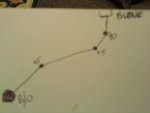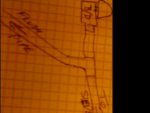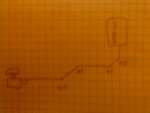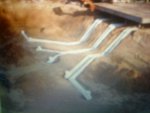Sounds like you understand the importance of not having spots for trapped air. Then it's just the detail of checking when back filling.
Testing
Testing the drain, always a good idea, rarely done I think. You can buy these kinds of
plugs pretty cheap. They're not great, don't hold much pressure, but enough. Plug the drain and fill the pipe with water and see what happens. Not a great test, but you'll catch big problems like a joint that didn't get glued. Think it won't happen? Shocking how often...but I checked it, twice. Pressurized air is the best test but more complex. Lots of info on the web for that.
Flush valves
I like simple. I don't think flush valves have much use. Generally, if there's a problem, it will be string algae clogging or even sand collecting in the pipe. Depending on the elevation of the flush the force of water can be kind of weak, especially if already clogged. For example, if the flush is 3' below it's current outlet in the sieve you're only gaining 3' of head, not a lot of force. I prefer sticking a garden hose down the drain from the sieve and blowing out the drain that way. You can get small brass nozzles that go on the end of a hose, which are used to cut through soil. Very powerful. I've also heard of people using compressed air. I once used a plumbing snake to clear a real mess.
Make your own sweeps
You might think this is crazy but I make my own sweeps. It's surprisingly easy and you get the exact turn you want, very smooth. Saves some money too, those 4" 45s run about $20.
To make a sweep I cut the length needed and duct tape one end closed. A cheap drain pipe cap works too, they're cheaper than PVC. You can also use the plug I mentioned earlier, if you're going to test.
Heat up some sand in a pan, or actually several pans. You can measure the amount of sand needed using the target pipe. I heat the sand in a fire, nothing fancy, regular camp fire. The sand doesn't need to get that hot, and you don't want it too hot, about 250F. Hotter is not better. It only takes a few minutes in a good fire.
Pour the hot sand in the pipe and in a few seconds the pipe is like cooked spaghetti. Lay it in the trench, which must be the basic needed shape. Pour water on the pipe for bit, and when firm pull it out and dump the sand right away so it doesn't heat the pipe back up.
I've seen people use torches to make shallow bends, big torches and several going at once, but a little tricky for sweep, The pipe can collapse when bent with a torch. Sand pushes outward and the pipe keeps its shape better.
All the bells and whistles
To form the bell ends heat about 8" of sand in a pot. When hot enough, maybe 275F, shove one end of the pipe into the sand. Get the PVC good and loose. Take it out and rub a wooden stick around the pipe's inside to start a flare. The PVC keeps wanting to go back, but you'll get it. Get enough flare so it'll go over another piece of pipe, a short piece is fine. Then just keep rotating and pushing and you'll get a perfect bell. Cool with water and pull off. Repeat for other end.
Best to make the bells after the sweep. I make the sweep a bit long and cut to length when ready. Instead of making bells you can of course use couplers, but those do have twice the gluing, easy to get a leak with 4" pipe. So I like the bells. Plus they're cool to make.
I said sand, and it does work, but I normally just use dirt if dry and loose.
I also do this with return lines. It's easier with smaller diameter pipe, you can do longer lengths.
Here a video of PVC bending, although this is just 3/4" pipe you'll get the idea.




